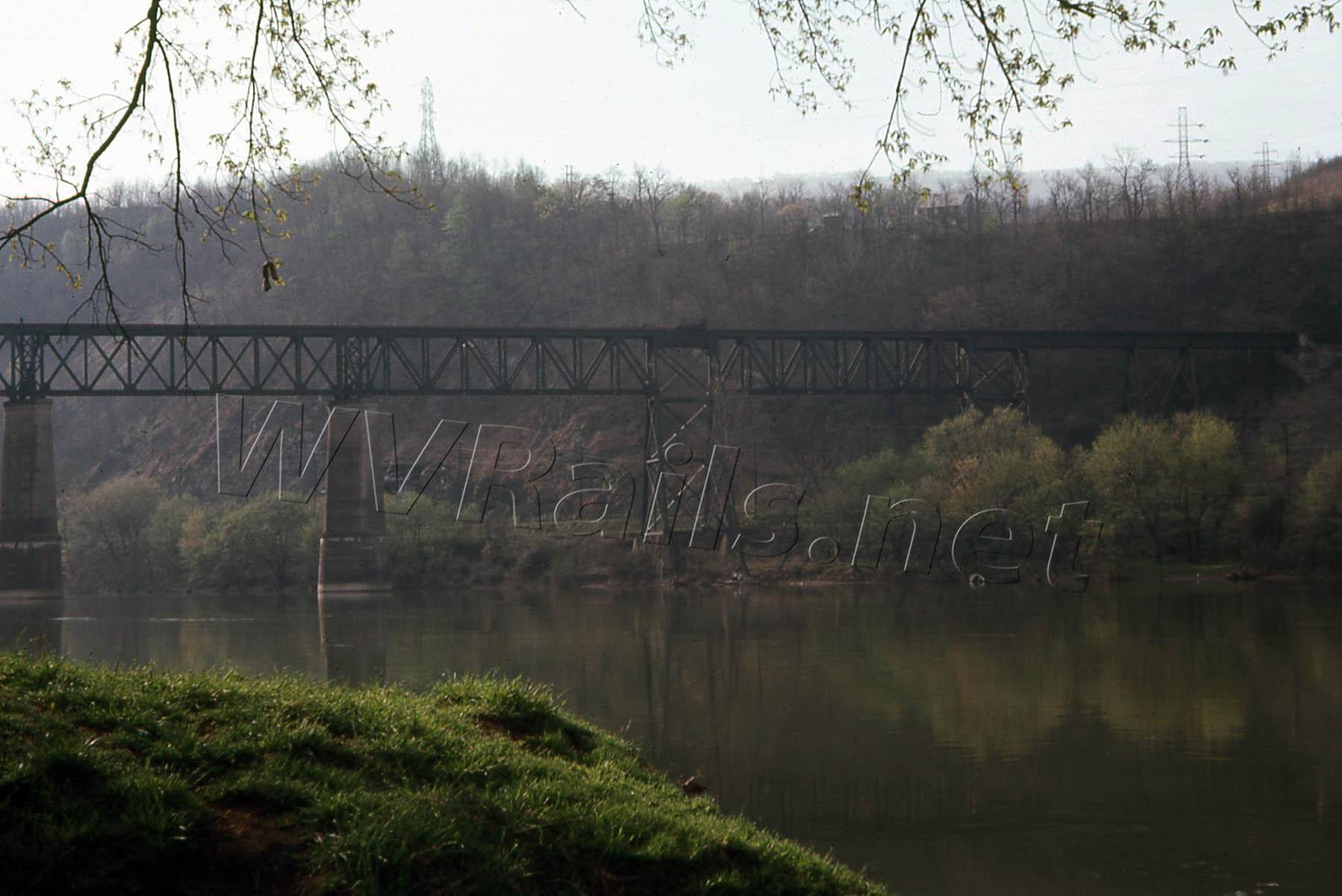 Spectacular crossing of the New River and N&W mainline at Glen Lyn, VA just across the West Virginia border. This photo was taken in 1968 approximately four years before this section of the former Virginian was retired due to the widening of US 460 to four lanes.
Spectacular crossing of the New River and N&W mainline at Glen Lyn, VA just across the West Virginia border. This photo was taken in 1968 approximately four years before this section of the former Virginian was retired due to the widening of US 460 to four lanes.
The purpose of this post is to look in at a few locations that were my favorite places to visit along the former Virginian Railway a few years following its absorption into the Norfolk and Western Railway on December 1, 1959. So much has been written about the history of the VGN that I will not go into details here. There are some fine resources that are available that are mentioned in my piece about Page, WV.
The VGN was in existence for a short 50 years. The many impressive bridges and tunnels (mostly in West Virginia) enabled the VGN to provide a superior gradient for hauling coal especially over that of N&W’s parallel route between Kelleysville, WV (east of Bluefield,WV) to Roanoke, VA and on to Norfolk.
When I first started taking pictures, the VGN had been gone for about seven years. The right-of-way still had the look of the VGN with its searchlight signals and communication lines, but all of the former VGN diesel locomotives had been repainted to N&W colors. Also the electrified portion of the railroad between Mullens and Roanoke was dismantled in the last half of 1962.
I hope you will enjoy the photos.
 Former VGN coal fired power plant located at Narrows, VA, about seven miles east of Glen Lyn. The plant supplied electricity for the entire electrified territory. It was shut down on June 30, 1962 at the end of electrification. The structure was dismantled in the early 1970’s for the US 460 widening project.
Former VGN coal fired power plant located at Narrows, VA, about seven miles east of Glen Lyn. The plant supplied electricity for the entire electrified territory. It was shut down on June 30, 1962 at the end of electrification. The structure was dismantled in the early 1970’s for the US 460 widening project.
Left Photo: Westbound N&W time freight heading to Bluefield. Right Photo: N&W passenger train the Powhatan Arrow also heading westbound under the New River bridge.
Left photo: Coal train just east of Kelleysville, WV about to head into Hales Gap tunnel on the former VGN. Eastbound coal trains from Bluefield on the N&W would utilize the connection at Kelleysville. From this point all coal from Bluefield, as well as Mullens on the VGN, travelled to Roanoke over the VGN which made it virtually a one way railroad. Empties headed back to Mullens over the N&W to Kelleysville. This location is now filled over including the tunnel by the US 460 widening project.
Right Photo: Same train passing over the New River bridge. The US 460 widening project utilized the VGN right-of-way either side of this bridge and the nearby bridge over the East River at the VA-WV state line. Because these bridges were left as “islands” they were dismantled. Only the massive concrete piers in the New River remain today.
View of bridge looking east. Beyond the end of this bridge, the eastbound lanes of US 460 uses the former VGN mainline to Narrows. Driving along you could almost get a feel of what it was like to be on a train riding along the New River.
Princeton became an important point on the Virginian. Coal hoppers were constructed and maintained at the massive shop complex. It is hard to believe that all of the buildings in the left photo have been torn down. There was an effort to save the buildings but it unfortunately failed. The photo on the right is the depot at Princeton. The steel post with the hanging insulator remained there as a tribute to the electrified part of the VGN. The depot was torn down in 1979 about 10 years after this photo was made. Some years later a new building which is a replica of the old depot was constructed and now serves as a museum dedicated to the history of the VGN.
Mullens, WV was the western end of the Virginian electrified route. It was also the location of Elmore Yard where short coal trains were gathered for the run up to the hill to Clarks Gap to be assembled in longer trains for the run eastbound to Norfolk. The photo on the right shows the building referred as the Mullens Motor Barn where electrics were serviced and later diesels after electrification ended.
Another view of the motor barn. The bridge in the background is the VGN mainline. The line on the other side of the Guyandotte River is a connection track from the mainline to the Winding Gulf Branch. The Winding Gulf Branch begins at the east end of Elmore Yard and runs past the motor barn next to the hillside as can be seen in the previous two photos. The connection track has since been removed.
A pair of former Virginian locomotives at Elmore Yard. When ordered by the VGN from Fairbanks-Morse in the early 1950’s, they were the most powerful single unit locomotives constructed at that time. The units in the photo above were classified as H24-66 and were known as Trainmasters. The VGN ordered 25 units numbered 50 to 74. After the merger, the N&W added a “1” in front of the number which made them #168 and #174 respectively.
View of another former VGN Trainmaster at Page, WV. Much has been written in my previous post on Page so I won’t go into details here. The locomotive is sitting in the area where a new coal loadout was constructed in the early 2000’s.
The top and bottom left photos were in my post on Page but on a visit to the area in May, 2013 I remembered this time to take photos at nearly the same location I did back in 1967. It was interesting to see the change over that period of time. The top two photos are looking westbound (geographically north) and the bottom two eastbound (geographically south). See how many changes you can find.
One reason for making the trip to Page this year was to install the last VGN Heritage Trail marker. This project was begun by a man named Aubrey Wiley out of Lynchburg, VA. He has written a number of books on the VGN. Aubrey has placed markers at various locations along the route of the former VGN from Deepwater to Norfolk. He gave me the privilege of installing the last marker for the Page-Kincaid area. Left photo: My cousin Joe Jett is pouring cement into the hole while I am making sure the post is vertical. The VGN mainline is in the background. Right photo from left to right: James Kincaid, trustee of Kincaid United Methodist Church, who agreed to host the marker; John Frazier, a native and local historian of the area and also a childhood friend of my mother who was a tremendous help in finding a location for the marker; and the author wearing a VGN tee shirt.
Closeup of the VGN Heritage Trail marker for the Page and Kincaid area along St Route 61. For more information on this project please visit the website as shown on the sign. The Virginian Railway has been gone since December 1, 1959, but memories of the VGN still run strong I’m sure for those who had family members employed by or those who simply admired the history and operation of the VGN. These markers will keep the memories and history of the Virginian Railway alive for years to come.

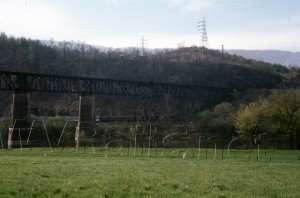
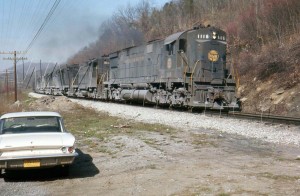
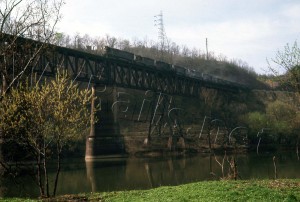
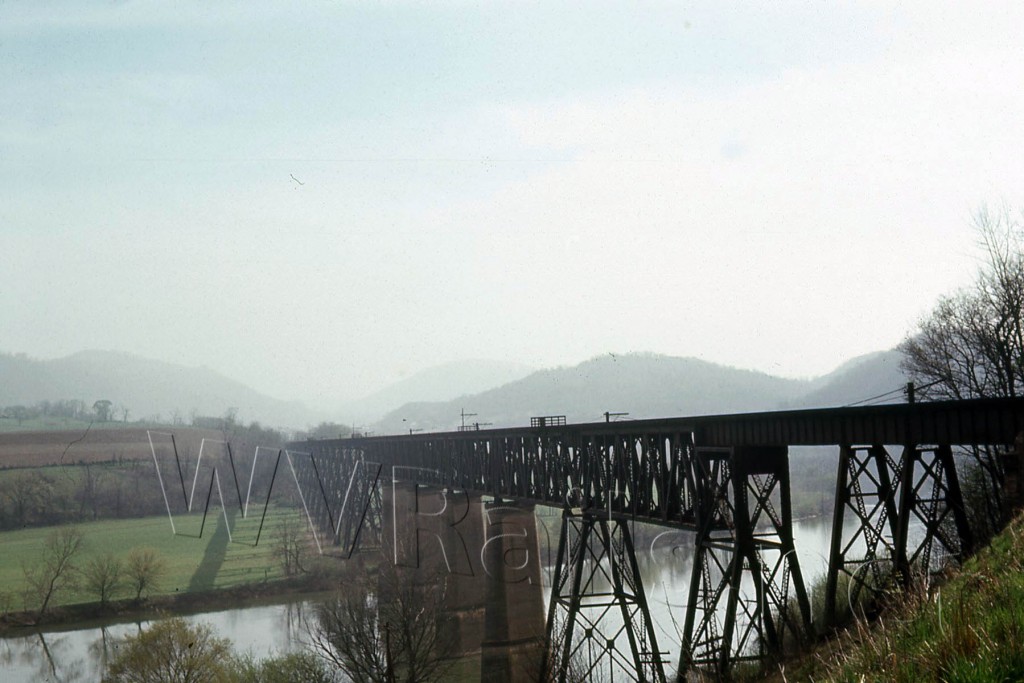

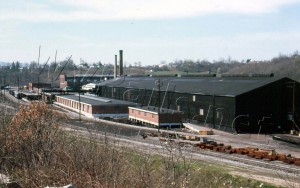
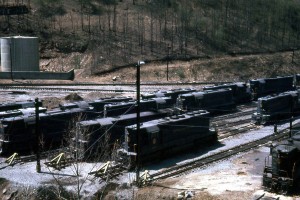
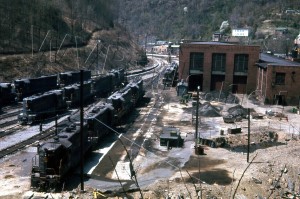

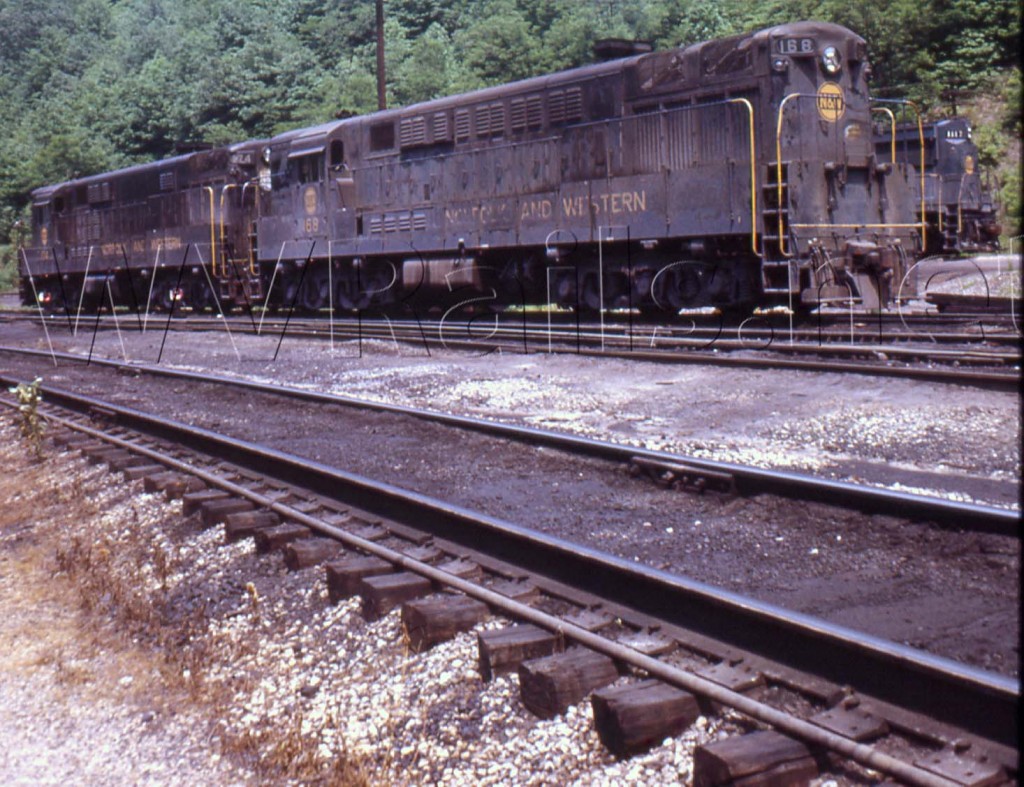
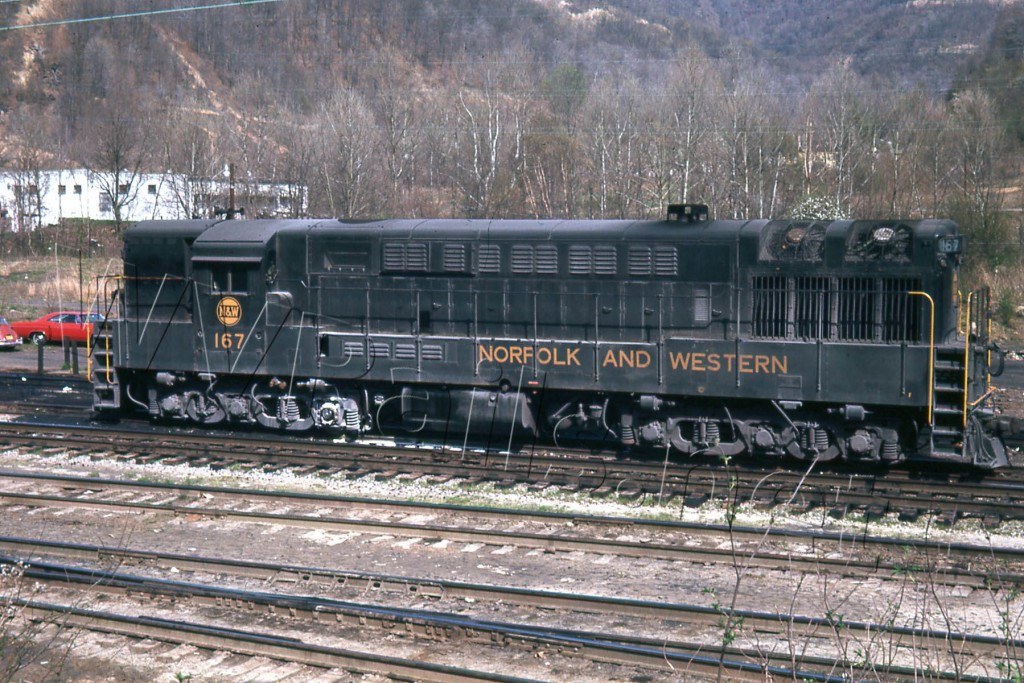
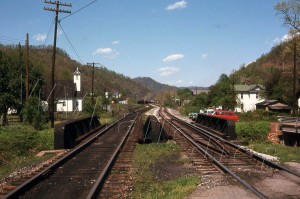
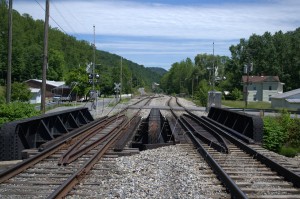
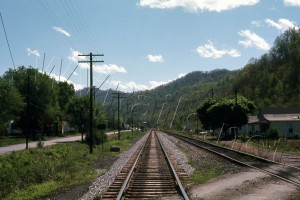
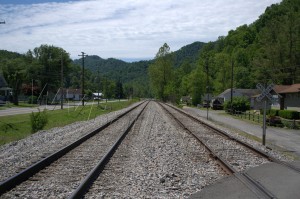
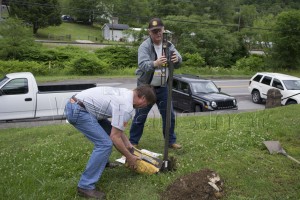
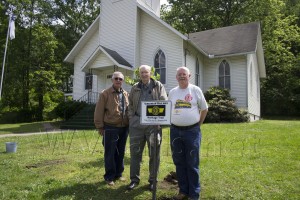
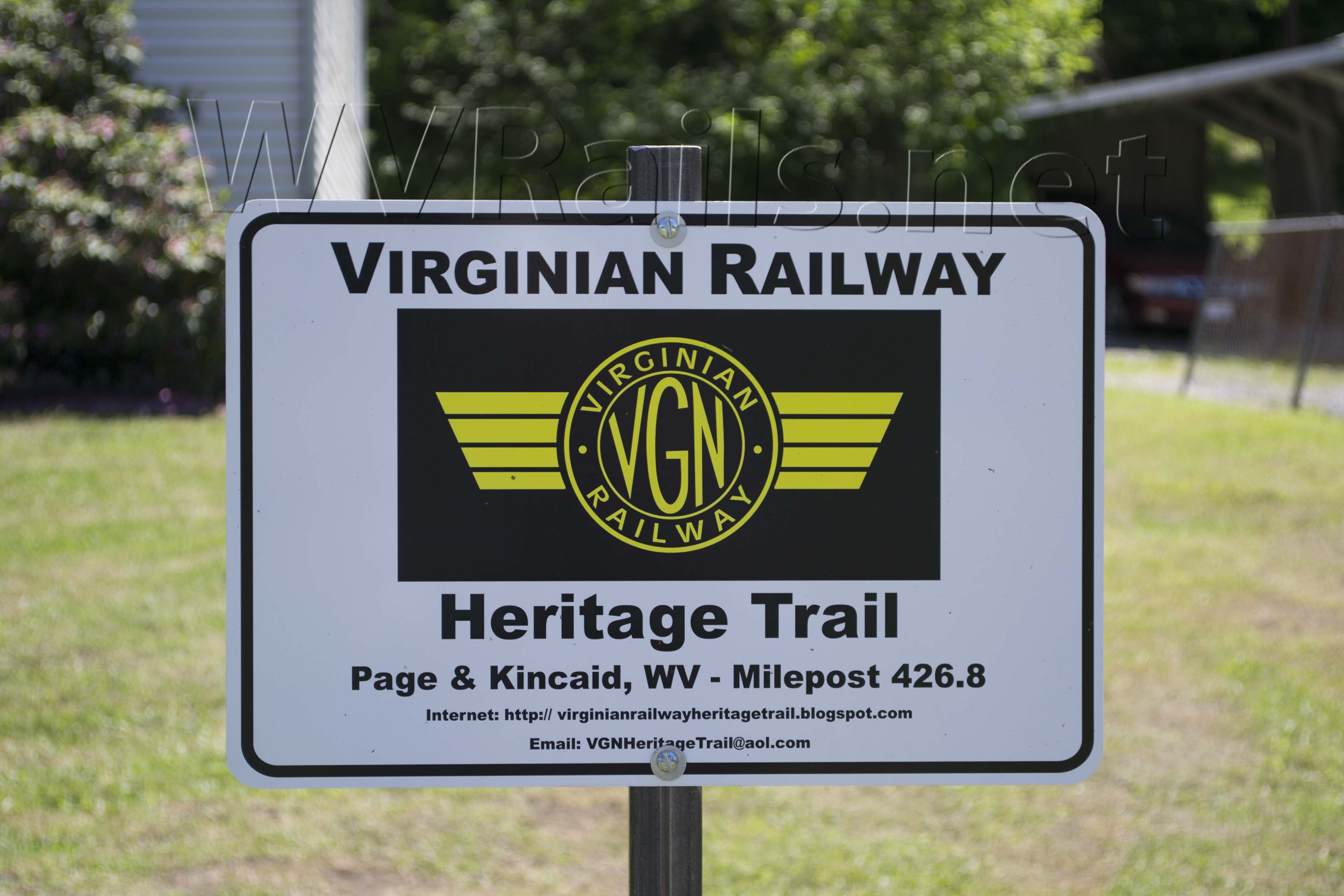
Recent Comments